HOT KNOWLEDGE
Between a Rock and a Hard Place
More knowledge makes for a better gardener. That’s what I had in mind with my most recent book, The Ever Curious Gardener, excerpted here:
With hot weather here today, and soon to be a regular occurance, I pity my plants. While I can jump into some cool water, sit in front of a fan, or at least duck into the shade, my plants are tethered in place no matter what the weather. And don’t think that plants enjoy searing sunlight. High temperatures cause plants to dry out and consume stored energy faster than it can be replenished. Stress begins at about 86 degrees Fahrenheit, with leaves beginning to cook at about 20 degrees above that.
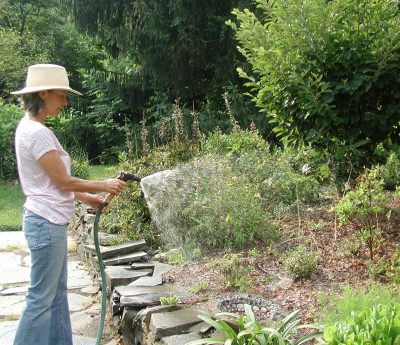
One recourse plants have in hot weather is to cool themselves by transpiring water. Transpiration, which is the loss of water from leaves, can cool a plant by about 5 degrees Fahrenheit. Over ninety percent of the water taken up by plants runs right through them, up into the air, exiting through little holes in the leaves, called stomates. Carbon dioxide and oxygen, the gases plants need to carry on photosynthesis, also pass in and out through the stomates.
All this is fine provided there is enough water in the ground. If not, stomates close, transpiration and photosynthesis stop, and the plant warms. Even if the soil is moist, stomates might close in midsummer around midday if leaves begin to jettison water faster than the roots can drink it in. This situation puts most plants in a bind. Should they open their pores so that photosynthesis can carry on to give them energy, but risk drying out, or should they close up their pores to conserve water, but suffer lack of energy?
CAM at work
Enter cacti and other succulents (all cacti are succulents—that is, plants with especially fleshy leaves or stems—but not all succulents are cacti): their fleshy stems and leaves can store water for long periods. After more than a year without a drop of water, my aloe plant’s leaves still look plump and happy.
Besides being able to store water in their stems and leaves, jade plants, aloes, cacti, purslane, and other succulents have another special trick, Crassulacean Acid Metabolism, for getting out of this conundrum.
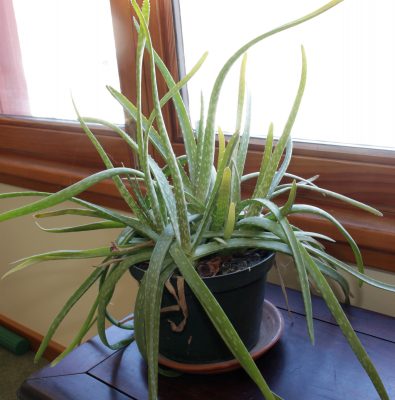
Aloe plant, more than a year without water!
They work the night shift, opening their pores only in darkness, when little water is lost, and latching onto carbon dioxide at night by incorporating it into malic acid, which is stored until the next day. Come daylight, the pores close up, conserving water, and the malic acid splits apart to release carbon dioxide within the plant, to be used, with sunlight, to make energy.
I’ve actually tasted the result of this trick in summer by nibbling a leaf of purslane—a common weed, sometimes cultivated—at night and then another one in the afternoon.
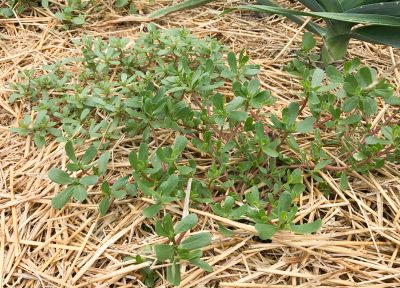
Malic acid makes the night-harvested purslane more tart than the one harvested in daylight. Try it.
No CAM? How ‘Bout C4?
Another group of plants, called C4 plants, function efficiently at temperatures that have most other plants gasping for air and water. C4 plants capture carbon dioxide in malate, the ionic form of malic acid, which is a four-carbon molecule, rather than the three-carbon molecule by which most plants—which are “C3”—latch onto carbon.
The enzyme that drives the C4 reaction is so efficient that C4 plants do not have to keep their stomates open as much as do C3 plants. The C4 pathway also does its best work at temperatures that would eventually kill a C3 plant, and cells involved in the various steps are partitioned within the leaf for greatest efficiency.
C4 plants are indigenous to parched climates, but not uncommon visitors in our gardens. Corn is a C4 plant. (Cool climate grains such as wheat, rye, and oats, are C3 plants.)

Looking at my lawn, I see another C4 plant. Hot, dry weather in August drives Kentucky bluegrass, a C3 grass, into dormancy. Not so for crabgrass, a C4 plant, which remains happily green.
I also find some other C4 plants, in addition to corn, in my garden. As many vegetables and flowers flag, all of a sudden lambsquarters and pigweed, both C4 weeds (or vegetables, for those who like to eat them), appear as lush as spinach in spring.
Gardener’s Assistance
Can I do anything to help out my plants in hot weather? Keeping the garden watered helps. (Ways to apply water and how much is needed are all-important, and topics unto themselves.)
Sprinkling or misting plants could keep them cool without their having to pull water up from the soil. But the thirty gallons of water that runs up through a tomato plant in a season, or the fifty gallons that flows through a corn plant, is for more than just cooling these plants. It also carries dissolved minerals from the soil into the plant. So it’s debatable how well a plant would grow with too much misting. And besides, wet plants are predisposed to disease.
A better alternative to sprinkling plants is to grow plants adapted to the climate and the season. My lettuce, spinach, peas, and radishes are doing fine now; despite today’s heat, it’s not really all that hot — yet. And nights are still cool. Mostly, I avoid growing these cool weather plants in summer. Except that I like my lettuce salads, so I extend its season by growing it in the shade beneath trellised cucumbers.
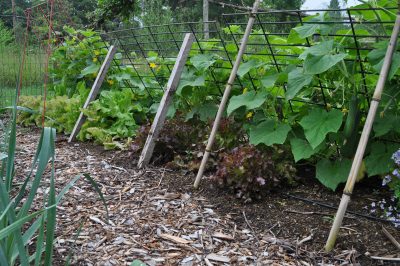
Fortunately, tomatoes, cucumbers, peppers, melons, and squashes, although they are neither cacti nor C4 plants, can take quite a bit of heat. They have very deep roots.

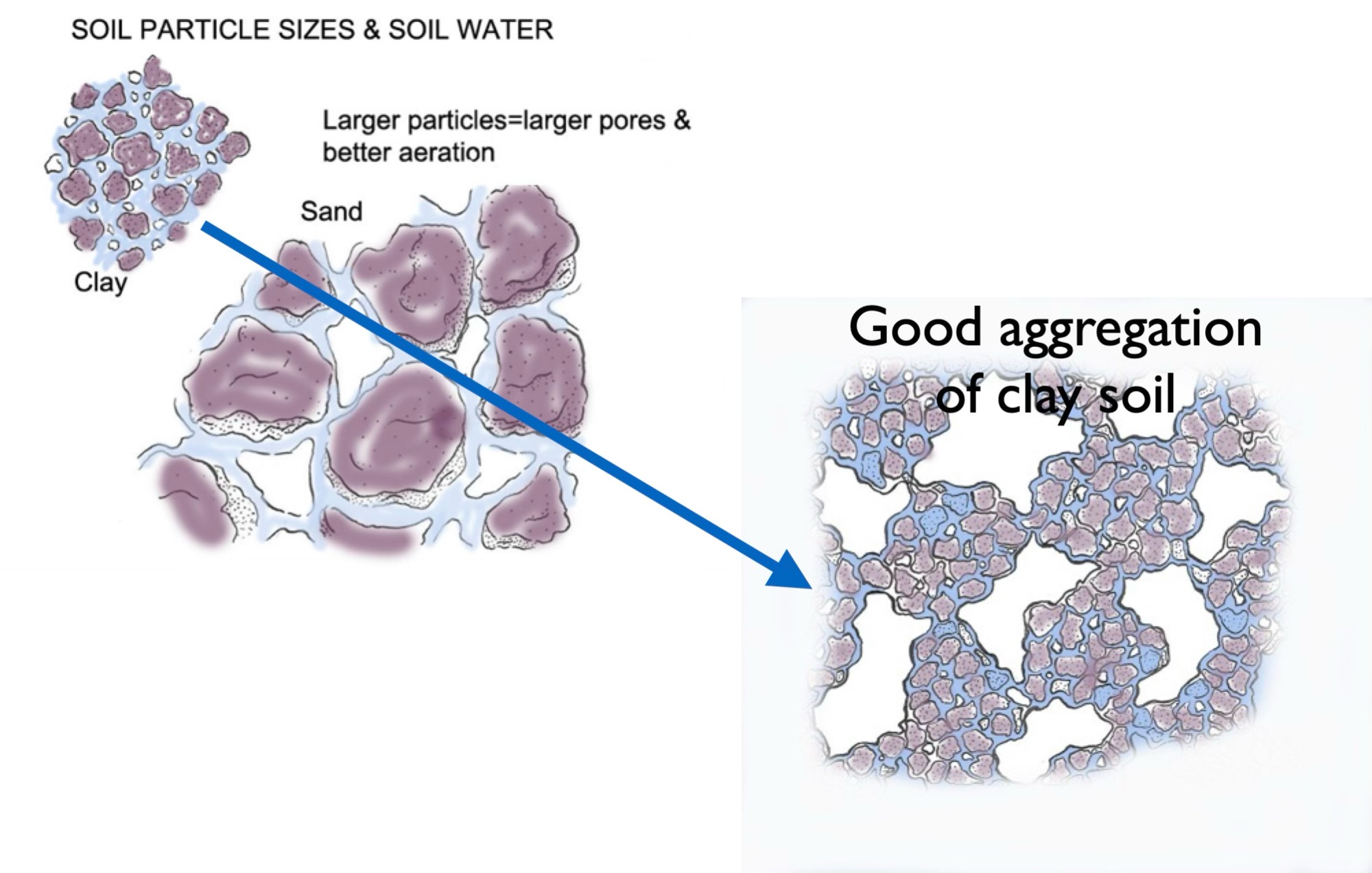

I have a lot of shade in my yard from trees I planted years ago. So here comes birds and drop all over the plantings I have below the trees. There nothing like seeing my beautiful kale leaves and pak Choi all riddled with bird doo. I am still trying to figure out if netting way above the vegetables would help with this delimma.
Move the garden? Cut down some trees?
Never heard of C3 & C4, thanks.
Did you put the lettuce on the north side of the cucumbers? Would it matter what side the lettuce wood be on?
Yes, and definitely should be on the north side or else no shading.
Is that corn Old Hickory corn?
My Father Past 20 years ago, but he had a black & white photo of himself in front of Old Hickory corn much like you photo.
No, 8-row Golden Bantam, my favorite sweet corn.
Very informative, Lee. Thank you as ever! Your posts always reveal delightful nuggets of knowledge that are appreciated and utilized.
Here in Australia where most parts of the country experience at least a few summer days where temperatures exceed 40 degrees Celsius (104 degrees Fahrenheit) I string up shade cloth that blocks 30% of sunlight passing through. This is enough to stop plants getting sunburn on stinking hot days yet still allows ample light for photosynthesis. I leave the shade cloth up for most of summer
Yes, you guys sure have plenty of hot sunbshine.